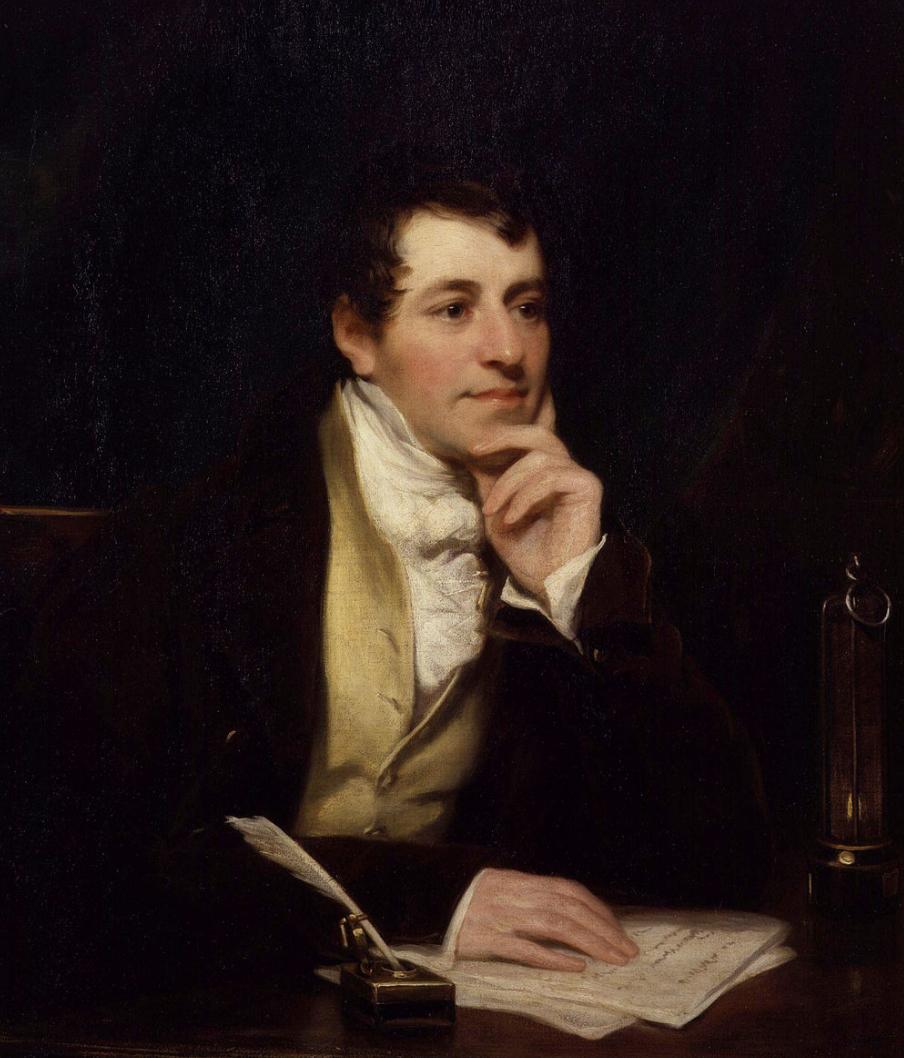His achievements were later called: the progress of the chemical sciences for a full century;
He discovered almost all the metal elements of alkaline earth;
He discovered and nurtured the father of electricity: Faraday;
Before his death, he said: The greatest discovery of my life is the discovery of Faraday;
He is Hemfrey Davey, known as the "father of inorganic chemistry"!

Humphrey Davey (1778–1829) was a British chemist who was president of the Royal Society and was knighted by the British Royal Family
Born on December 17, 1778, to an ordinary family in the poor countryside of England, Humphrey David showed a talent for exploring new things from an early age; once, when he happened to see a doctor in the city preparing drugs, he was instantly fascinated by the strange changes produced by various substances, and since then he has often simulated various experiments on the roof of his house with pots and pans. When David was 16 years old, his father died tragically, the family's financial situation took a sharp turn for the worse, David's mother knew that David liked chemistry, so she sent him to a pharmacy as an apprentice, in the private library of the pharmacy owner Dr. Boles, he carefully read the chemist Lavoisier's works and Nicholson's "Dictionary of Chemistry", after which David fell madly in love with chemistry.
At the age of 22, he discovered that nitrous oxide (commonly known as laughing gas) had an anesthetic effect and became famous in one fell swoop
In the middle is Humphrey David at the British Gas Institute
Laughter was once popular among the British aristocracy and high society
In 1798, Humphrey Davy came to work at a gas medical research institute in Britol, England, where he was tasked with studying the properties of nitrous oxide, which was a very dangerous task at the time, and nitrous oxide was considered to be highly toxic, and inhalation would damage the respiratory system and cause serious damage to the body. In this case, Humphrey David still risked experimenting with his own body, and finally a year later, his experiment proved that nitrous oxide is harmless to the human body, and has an anesthetic effect, which can inhibit the pain of patients. To this day, nitrous oxide is still used in surgical anesthesia, reducing mental distress during tooth extraction and maternal vaginal delivery.
Application of nitrous oxide in surgery
[On 11 December 1844, nitrous oxide was first used as an anesthetic in medical treatment, and dentist Horace Wales used nitrous oxide to relieve pain in patients during tooth extraction. 】
Creatively discovering a variety of chemical elements by electrolysis is the scientist who has discovered the most chemical elements so far, and is known as the "father of inorganic chemistry".
Alexandro Junyan and his invention of the Volta stack
In 1799, physicist Alessandro Junyan invented the volta stack (the world's earliest chemical battery), and Hemfrey Davey applied it to his chemical experiments with his extraordinary scientific intuition, and in 1807 he successfully electrolyzed potassium carbonate (K2CO3) and sodium carbonate (Na2CO3) to obtain metal potassium (K) and metal sodium (Na). Then, through electrolysis of alkaline soil, four alkaline earth metal elements were successfully separated: magnesium (Mg), calcium (Ca), strontium (Sr), and barium (Ba) ! In addition, he heats boric acid (H3 BO3) and potassium (K) in a hydrogen (H2) environment and then forms the element boron (B). These elements were discovered by him in the middle of the year, and it was simply a life!
The electrolytic apparatus used by Humphrey Davey
The real inventor of the light bulb
Humphrey Davey invented the carbon arc lamp around 1800-1810, which is composed of arcs between carbon electrodes in the air and is the earliest practical electric lamp. From 1870 onwards, it was widely used in European street and large architectural lighting until it was replaced by incandescent lamps in the early 20th century.
Edison was born 40 years after Humphrey Davey invented the light bulb, and the bulb made by Humphrey Davey could only last for 12 hours, while Edison's light bulb made of carbon filament could operate for several days.] Therefore, Edison did not invent the light bulb, but improved the design of the light bulb! 】
Invented the "David Lamp" that could be used in mines, saving the lives of countless miners
Davey lamp structure diagram
Humphrey Davy invented a safety lamp in 1815, which can be used in flammable environments, the appearance of this lamp, greatly reduced the gas explosions that often occur in mines, the British called this safety lamp and the Battle of Waterloo against Napoleon in France "the two great victories of England in 1815", in honor of Humphrey Davy's contribution, people called this safety lamp "David lamp".
David Lights
[The Olympic Torch Relay uses modern lamps similar to the principle of The David lamp.] Such as Sydney, Athens, Turin, Beijing, Vancouver and Singapore Olympic Games]
Discovering Talent – The Father of Electricity: Michael Faraday
As a young apprentice in a binding shop in London, Faraday was rewarded for attending a humpherey Davey lecture at the Royal Society, and after listening to the lecture, Faraday sent the lesson notes and his insights to Humphrey Davy, and was thus appreciated as a student of Humphrey Davy. Later, Faraday discovered the phenomenon of electromagnetic induction, made great contributions to electricity, and became one of the most influential scientists in history. Thanks to The Bole of Humphrey David, Faraday, who had no formal education since childhood, was able to emerge in the scientific world, and the story of the encounter and acquaintance between master and apprentice became a good story.
In 1829, before his death in Geneva, Humphrey Davey said: "The greatest discovery of my life is the discovery of Faraday!"
This article is the first children's science essay contest in Zhengzhou City
Author: Jiang Yangyang
Opinions are solely those of the author and do not represent the position of this number